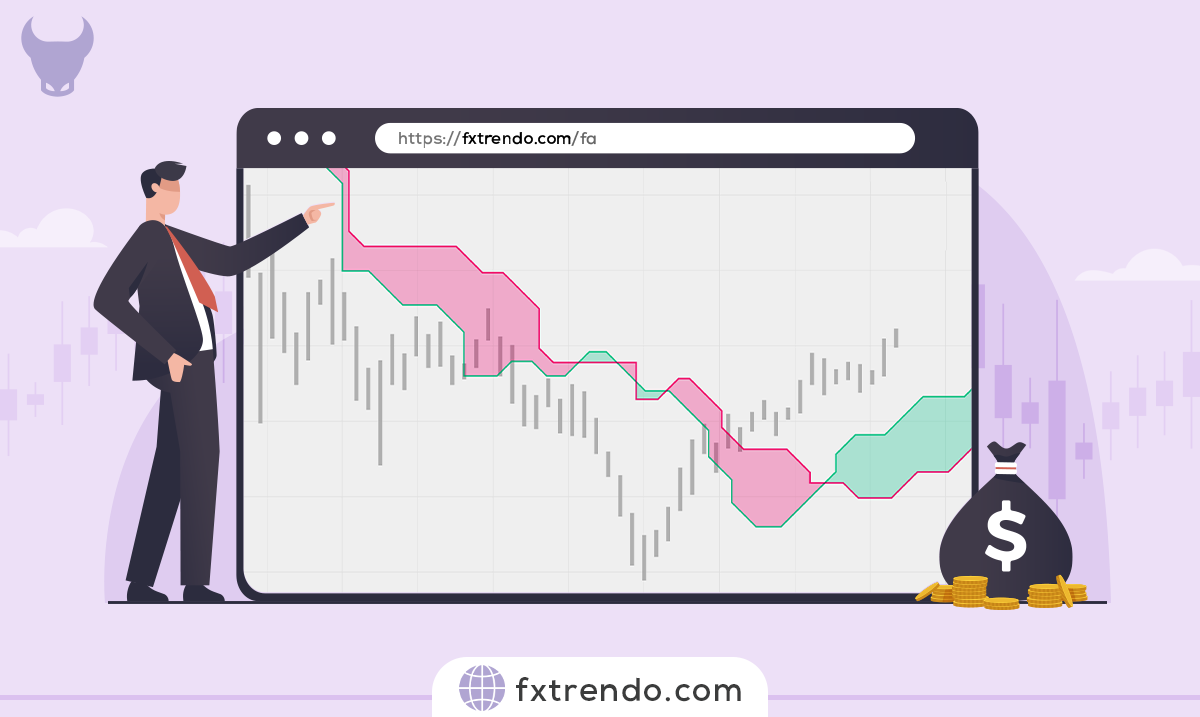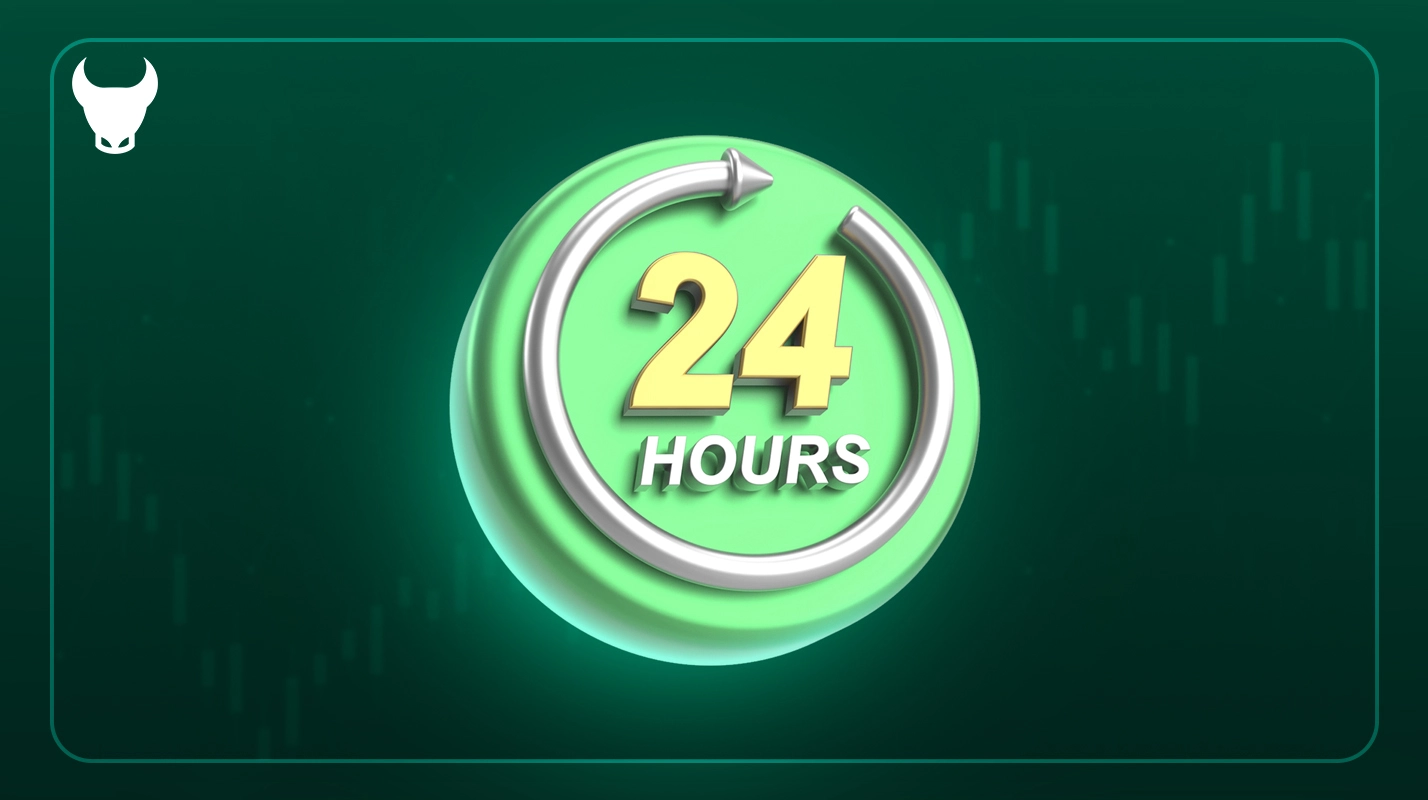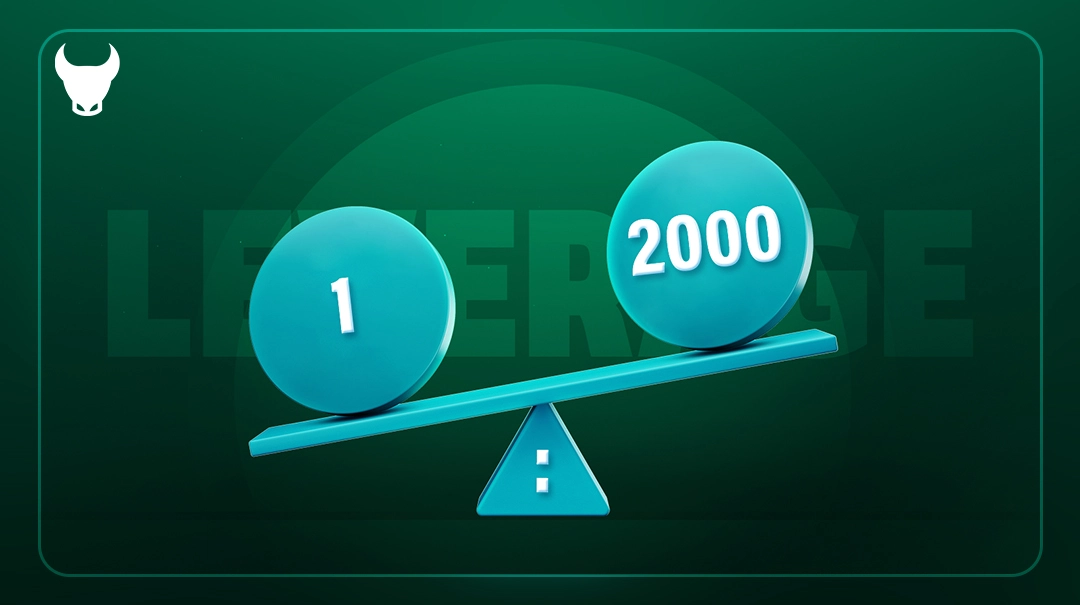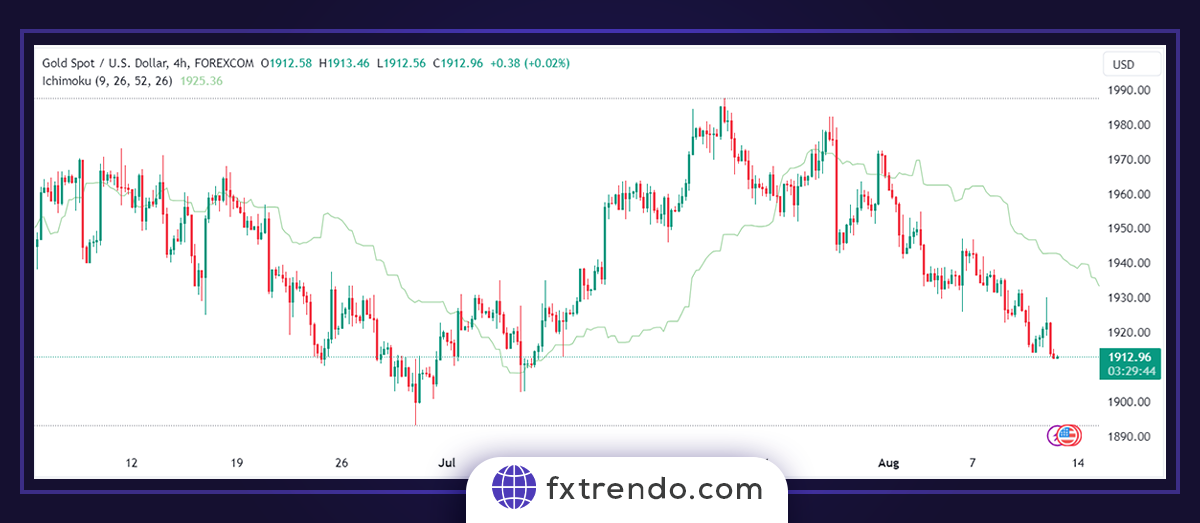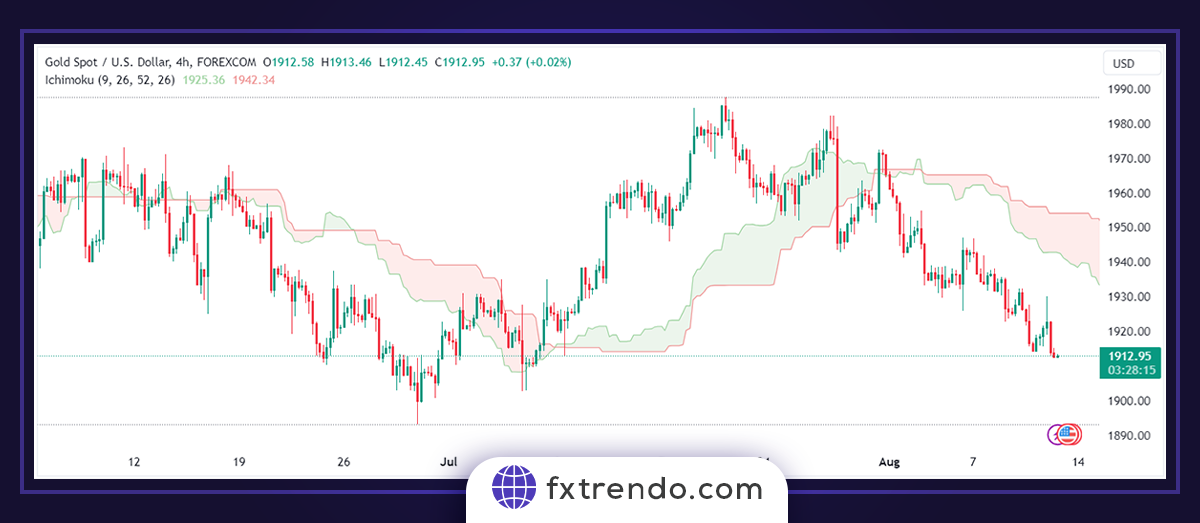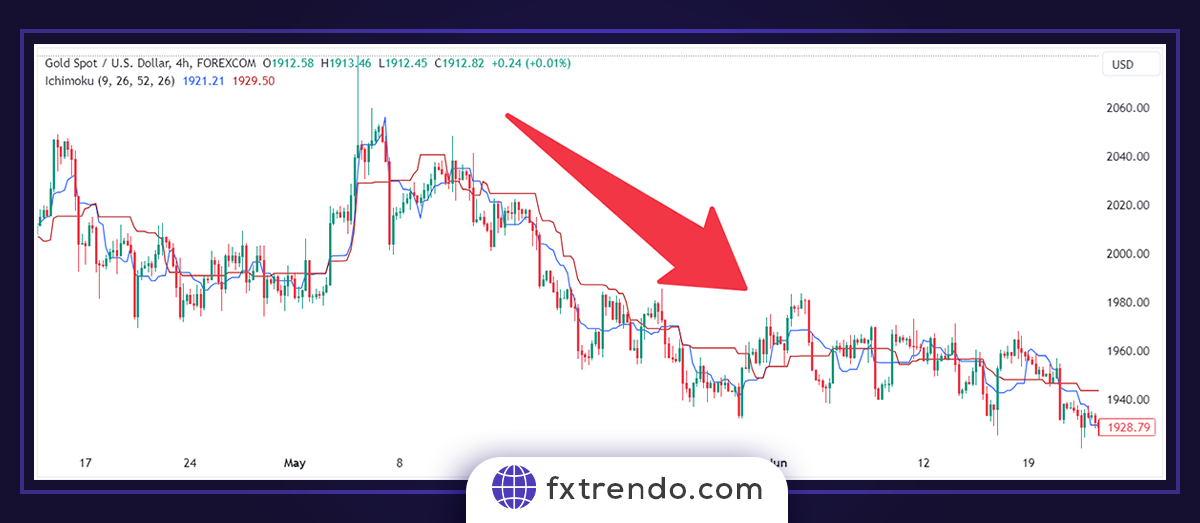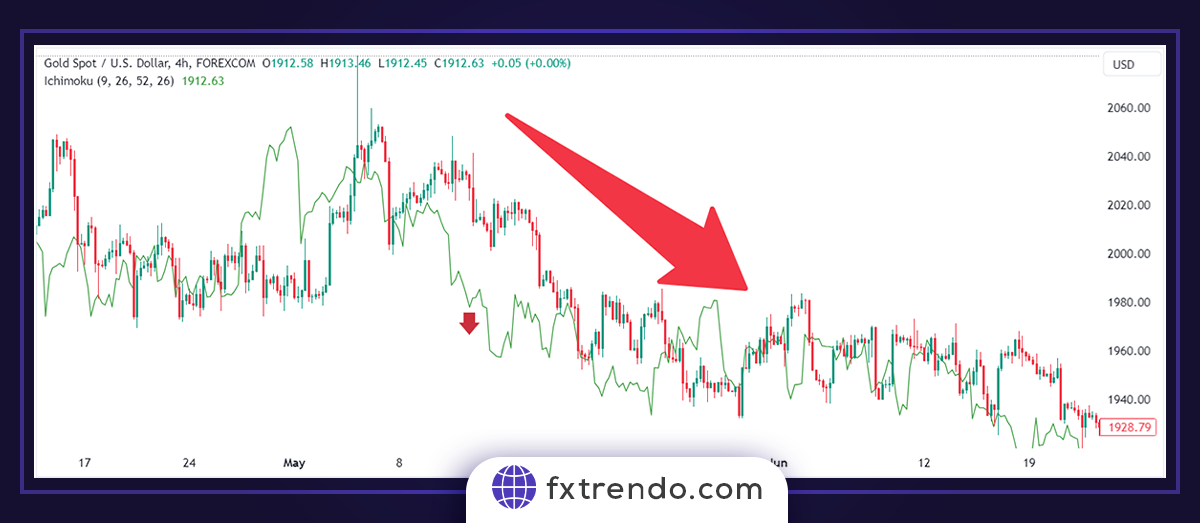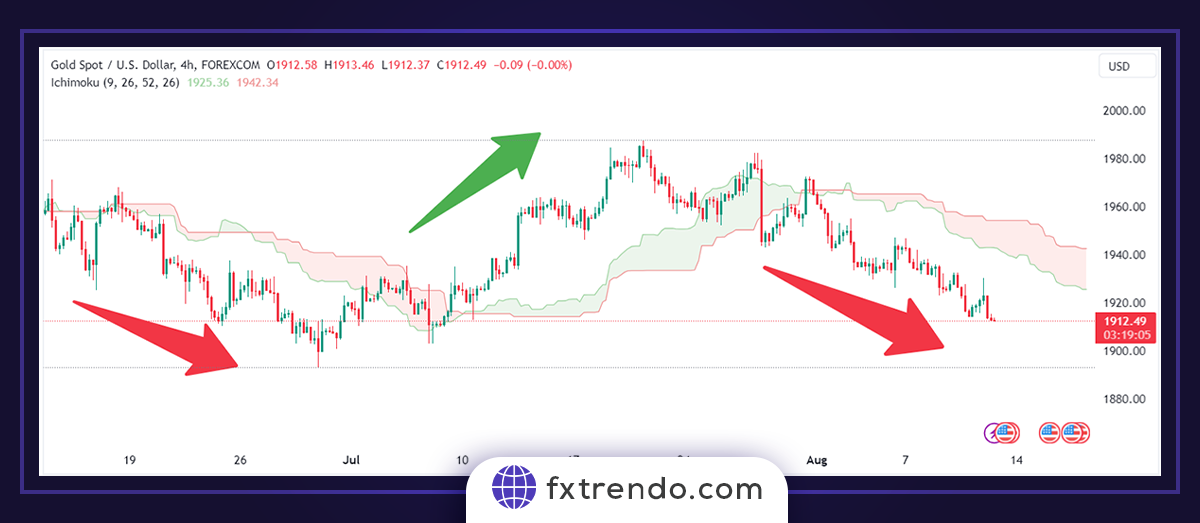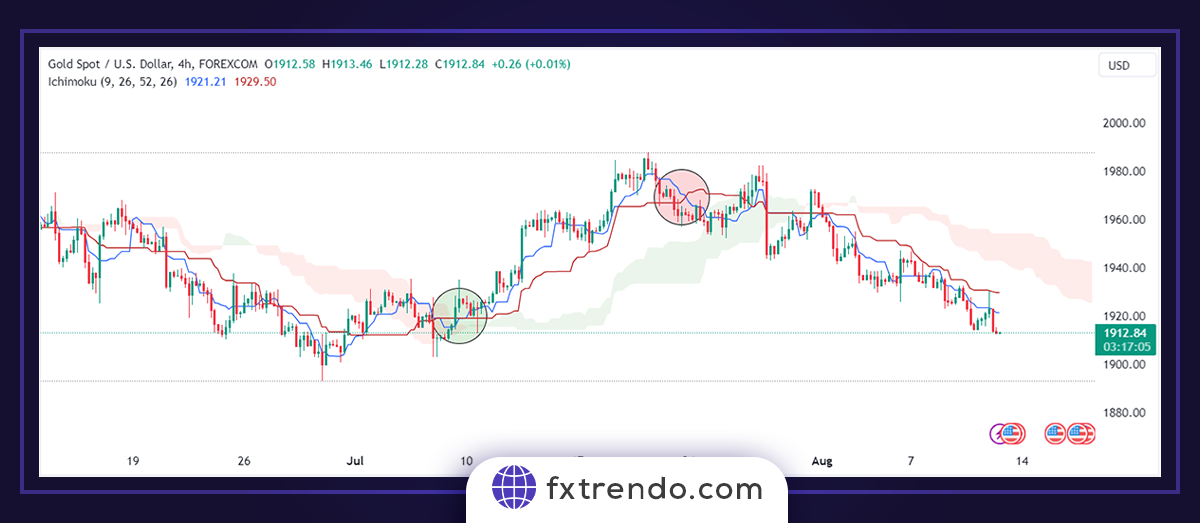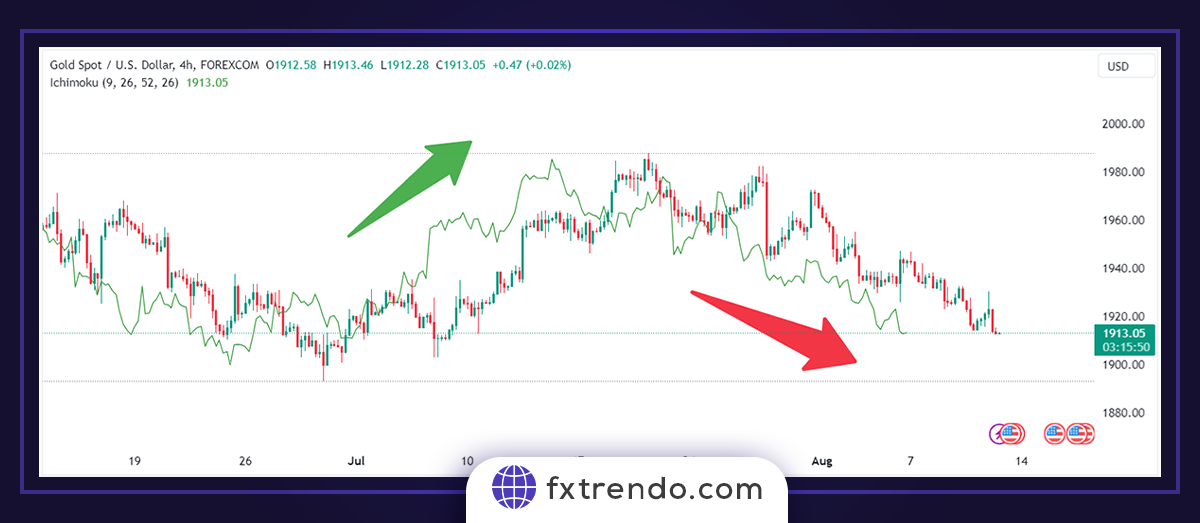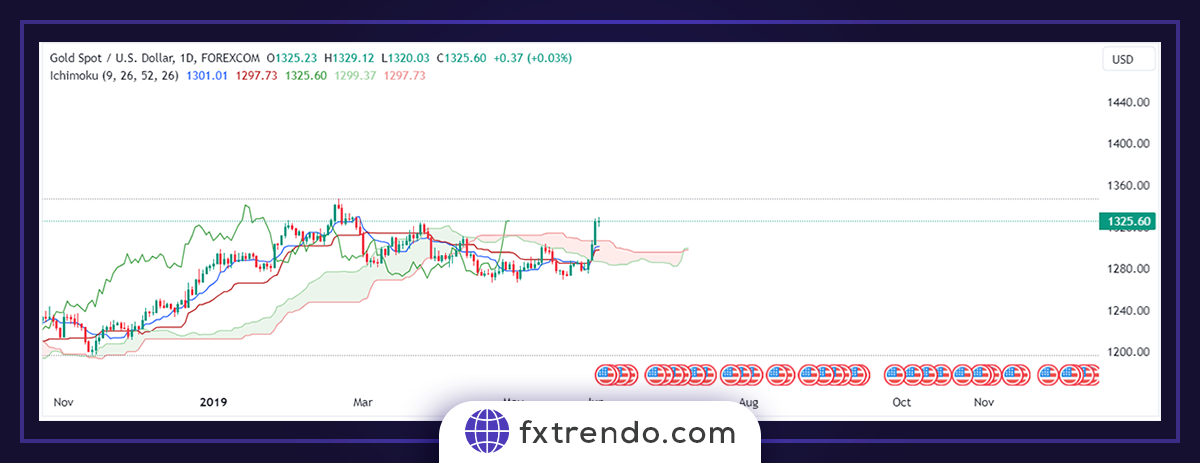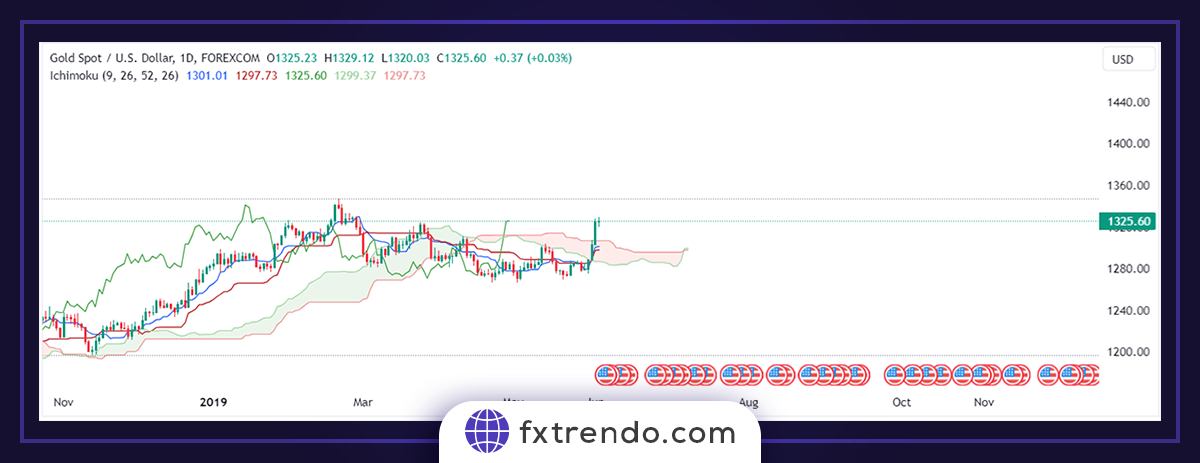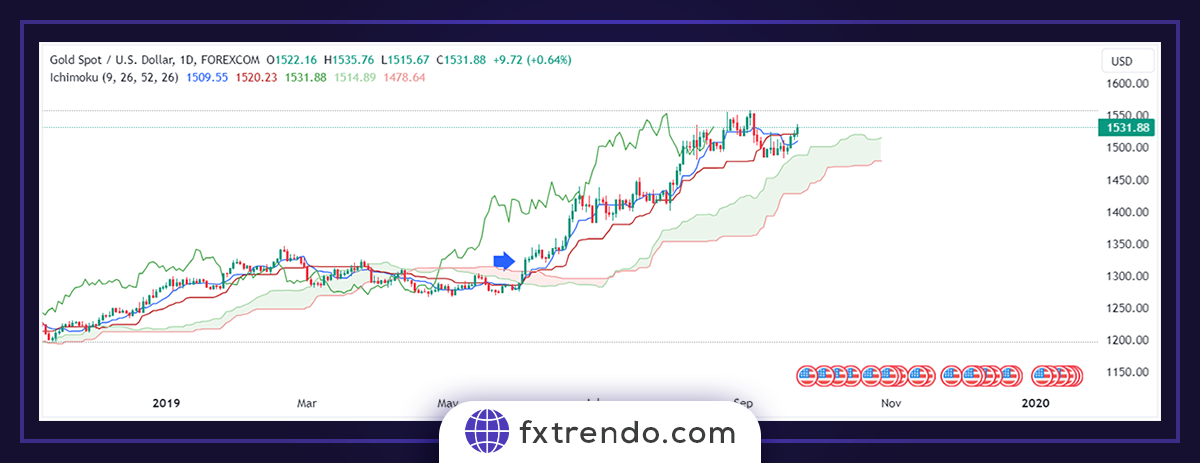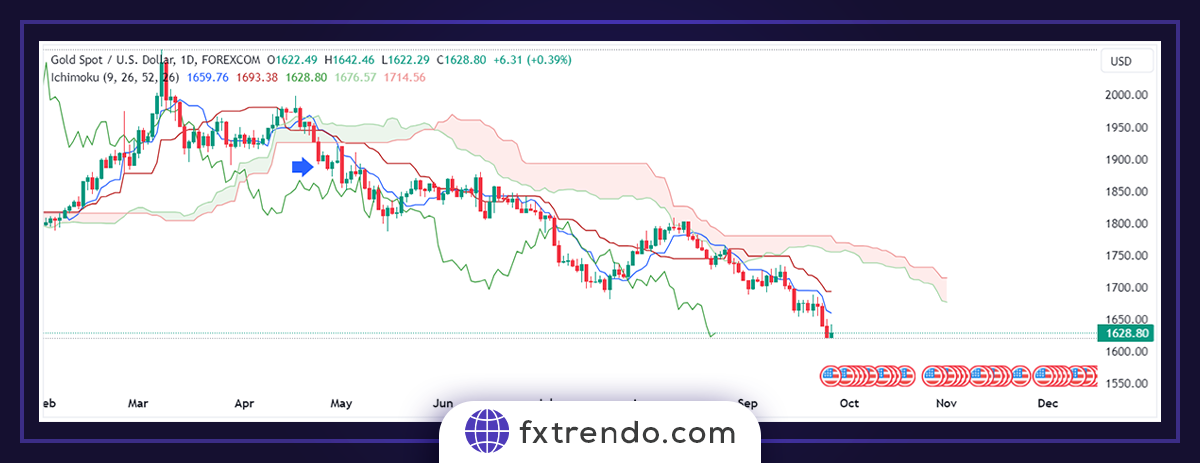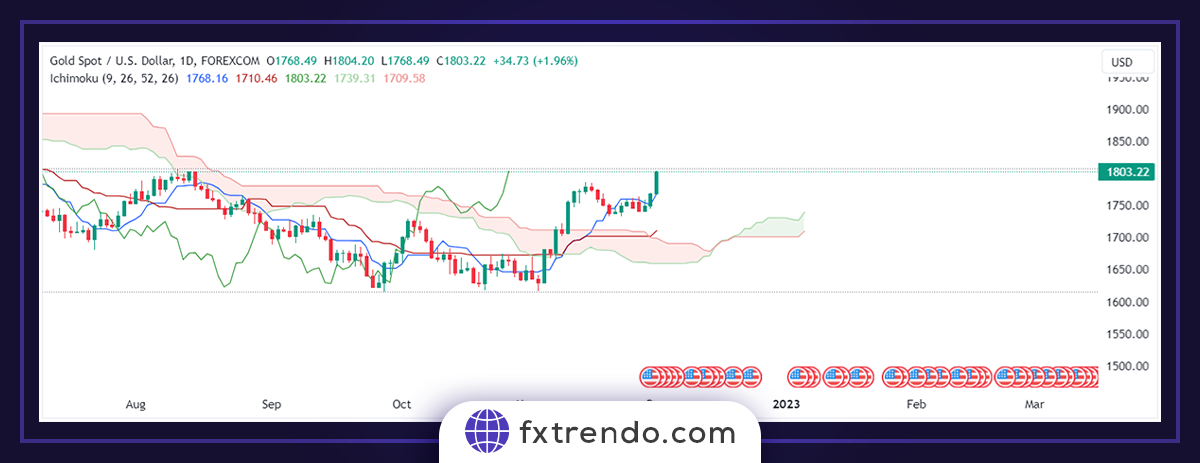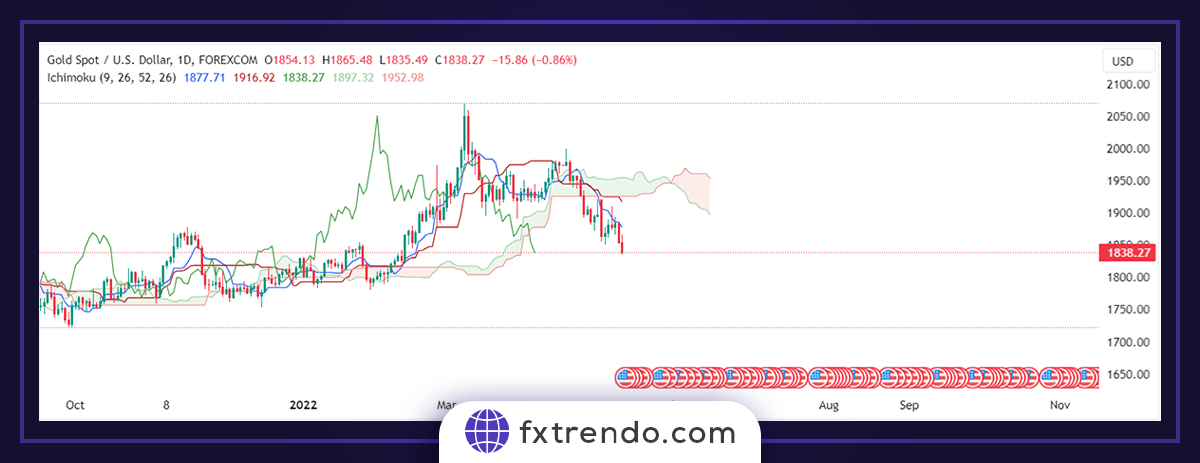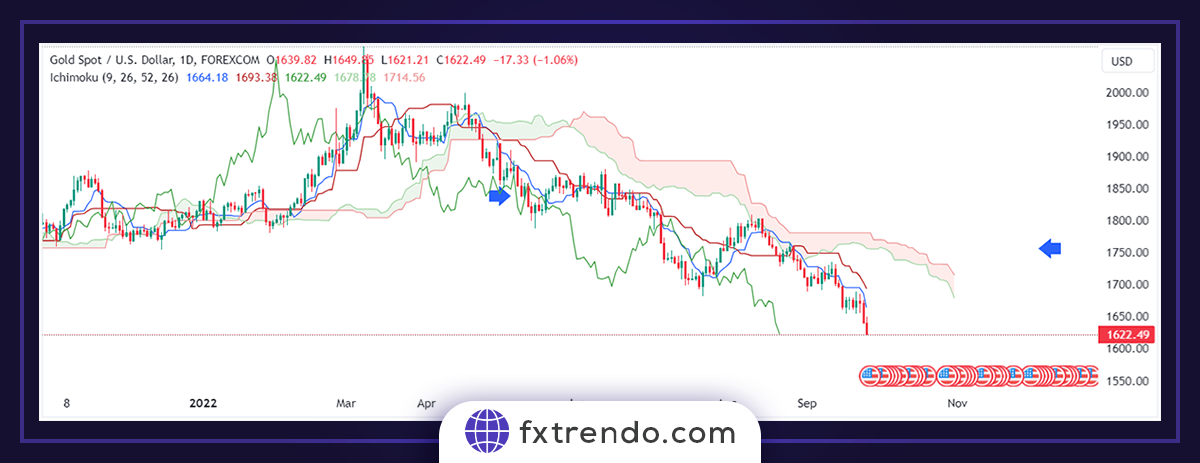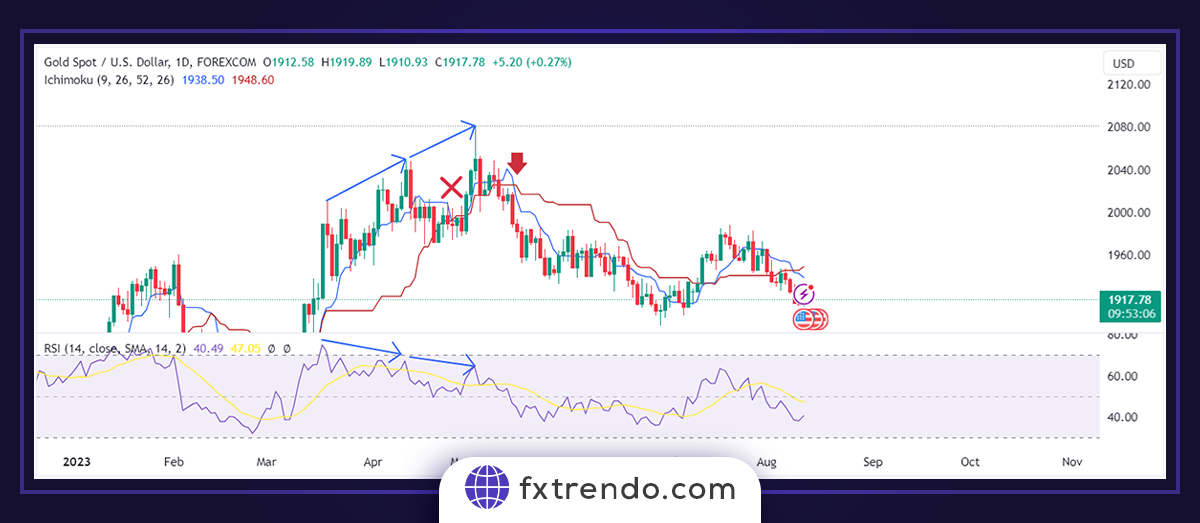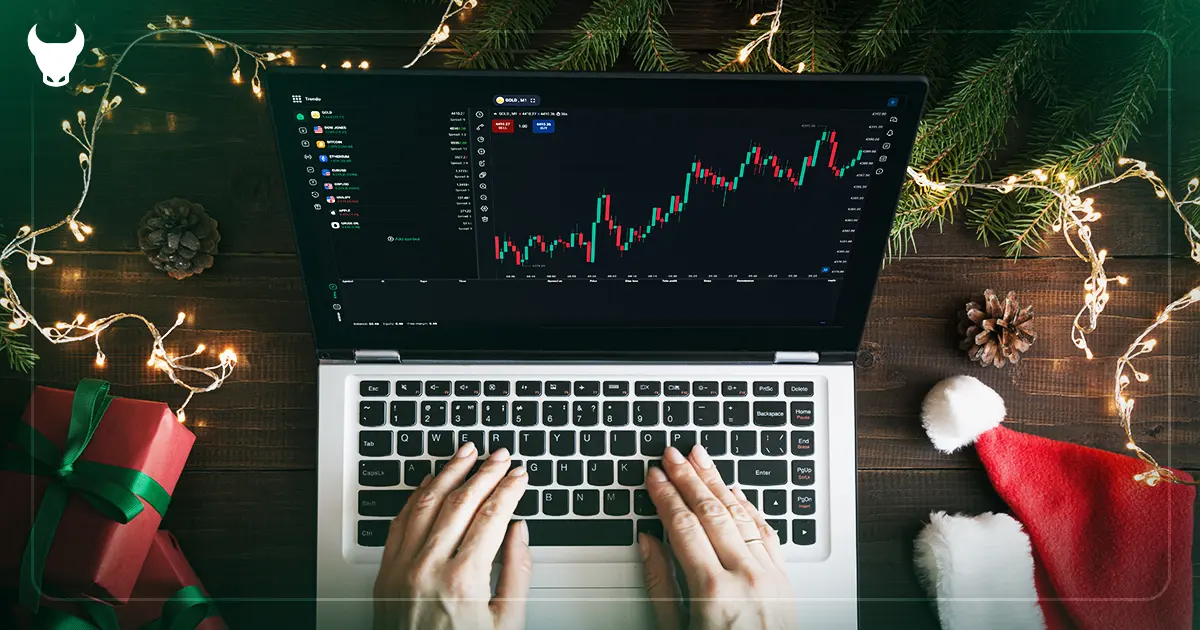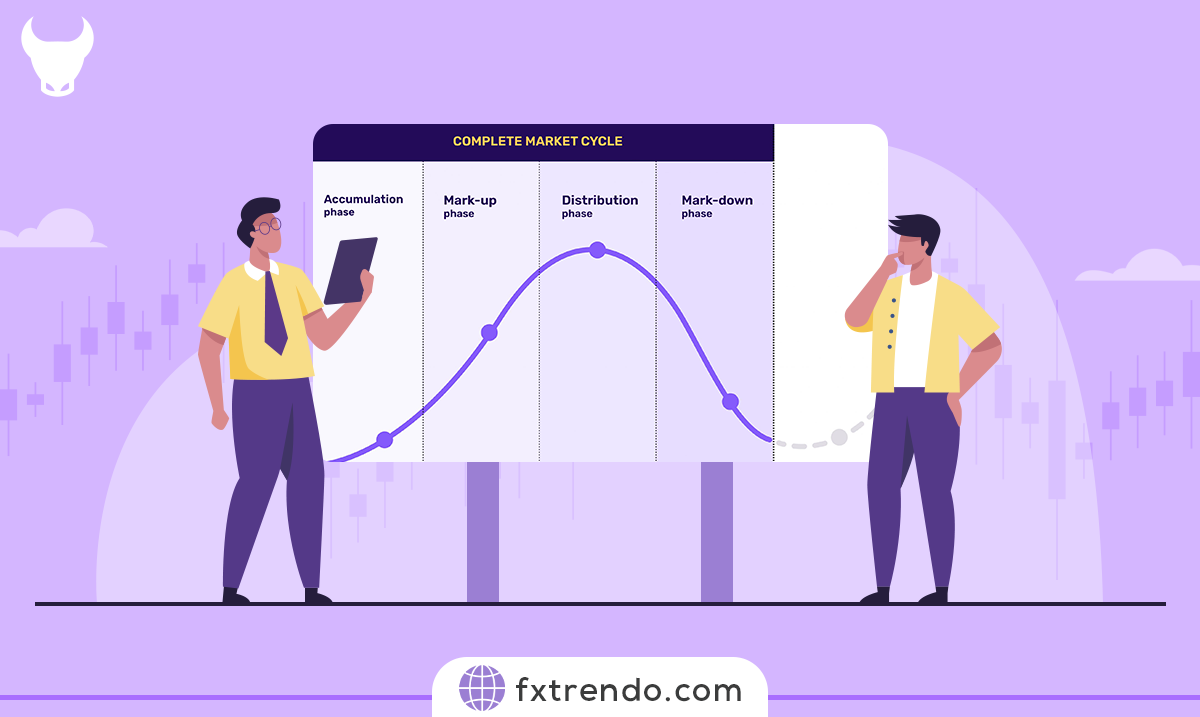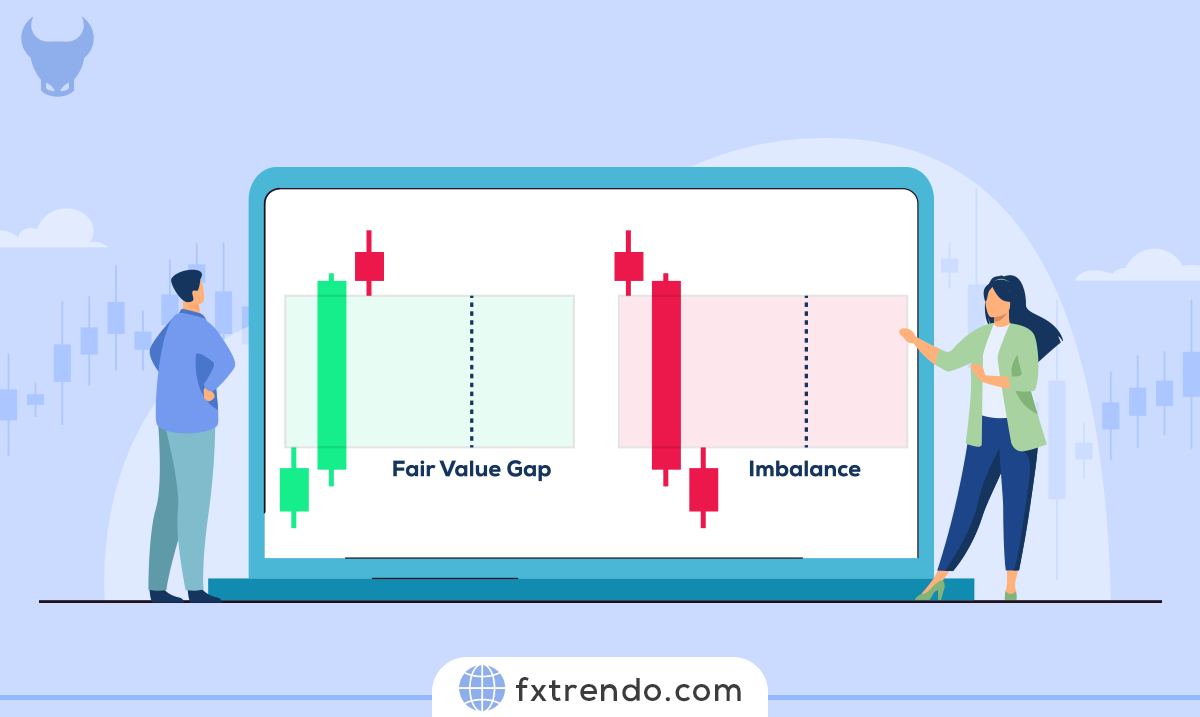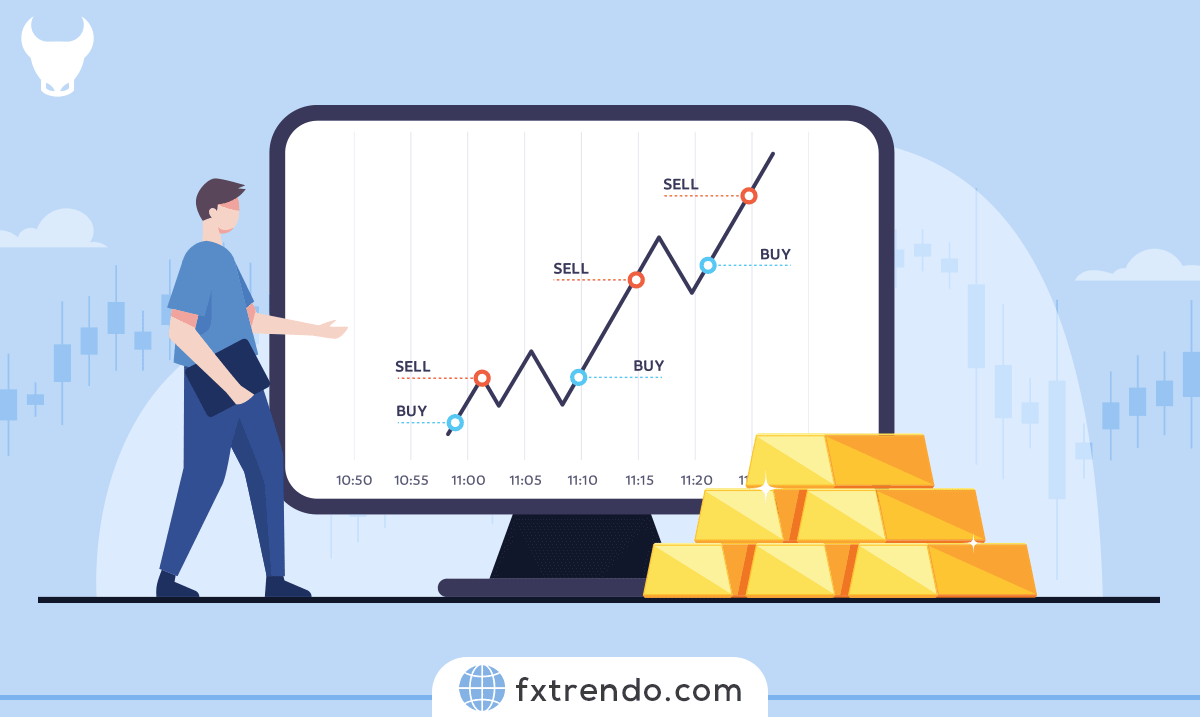- Introducing the Ichimoku trading system
- Description of Ichimoku Components
- Practical principles of Ichimoku in trading
- Ichimoku strategies
- Combination of Ichimoku with other indicators
Ichimoku, an indicator or a trading system?
Ichimoku is not an indicator but a trading system. Ichimoku Kinko Hyo is one of the most effective trading systems used with Japanese candlestick patterns . Ichimoku Cloud is a technical analysis tool widely used in Forex market trading. A Japanese trader named Goichi Hosoda developed this indicator in the 1930s. The Ichimoku Cloud is a complex indicator consisting of five different lines that provide traders with a comprehensive view of the trend, support, resistance levels, and potential entry and exit points.
What are the components of the Ichimoku indicator?
The Ichimoku cloud is a versatile indicator that we can use to analyze the market in different time frames and to identify trends, momentum, and possible reversal areas. Ichimoku Cloud consists of five main components:
- Tenkan-sen
- Kijun-sen
- Chikou Span
- Senkou Span A
- Senkou Span B
Let’s take a closer look at each of these components.
Tenkan-sen (Conversion Line):
Tenkan-sen is the fastest and weakest line of the Ichimoku system and the moving average from the highest ceiling to the lowest floor in the last nine periods. They use it to identify short-term trends and potential reversal trends. The trend is bullish when the price is higher than the Tenkan-sen and bearish when it is lower.
Kijun Sen (Base Line):
Kijun-sen is a moving average from the highest ceiling to the lowest floor over the past 26 periods. They use it to identify mid-term trends and potential support and resistance levels. The trend is bullish when the price is higher than the Kijun Sen and bearish when it is lower.
Chikou Span (Lagging Line):
Chikou Span is the current price drawn 26 periods after that. They use it to confirm trend direction and potential support and resistance levels. When the Chikou Span is higher than the price, the trend is bullish and is bearish when lower.
Senkou Span A (Leading Span A):
Senkou Span A is the average of Tenkan Sen and Kijun Sen drawn 26 periods ahead. They use it to identify potential support and resistance levels in the future. When the price is higher than the Senkou Span A, the trend is bullish and bearish when it is lower.
Senkou Span B (Leading Span B):
Senkou Span B is the average of the highest ceiling and the lowest floor of the last 52 periods, drawn 26 periods ahead. They use it to identify potential support and resistance levels in the future. When the price is higher than the Senkou Span B, the trend is bullish and bearish when it is lower.
Kumo (Cloud) consists of the fourth and fifth components of the Ichimoku Kinko Hyo system, Senkou Span A and Senkou Span B. “Cloud” is the most distinctive feature of the Ichimoku system. This blob of paint on the screen is perhaps one of the cleverest applications of technical analysis theory because it is one of the few forms of technical analysis that actively projects non-trendline data into the future (essentially turning lagging analysis into leading analysis). Cloud is the space between the Senkou Span A and Senkou Span B lines. Most software will shade the area between these two lines. The span is green when Senkou Span A is above Senkou Span B. This area will be red if Senkou Span A is below Senkou Span B.
Ichimoku practical principles in Forex trading
Now that we have learned Ichimoku’s components, let’s analyze how to use it effectively in Forex trading. This trading system is used in the following techniques:
- Identifying trends
- Trend confirmation
- Identifying support and resistance levels
- Determining entry and exit points
Follow along for the explanation of these techniques.
Identifying Trends:
The first step in using the Ichimoku Cloud is identifying the trend. Traders can do this technique by looking at the price position relative to Tenkan-sen and Kijun-sen. If the price is above both lines, it is bullish, and bearish if it is below both lines. The trend is range or neutral when the price is between two lines.
Trend Confirmation:
The next step is to confirm the trend using Chikou Span. Chikou Span confirms an uptrend if it is above the price or a downtrend if it is below the price. It indicates the possibility of a price correction or reversal trend if it is in the opposite position.
Identifying support and resistance levels:
Senkou Span A and Senkou Span B can identify future potential support and resistance levels. When the price is above Senkou Span A and B, it indicates a strong uptrend, and a strong downtrend when it’s below both lines. If the price is between the two lines, it is a ranging market.
Determining entry and exit points:
Once you have identified and confirmed the trend, you can start looking for signals. The Ichimoku indicator provides several signals traders can use to enter or exit trades. These signals are:
- Kumo cloud breakout
- Tenkan-sen/Kijun-sen crossover
- Chikou span confirmation
- Senkou Spans’ crossover
We will explain these signals further.
Kumo cloud breakout:
when the price breaks the cloud upwards, it is a bullish signal, and the trader can enter into a buy trade, and when the price breaks the cloud downwards, it is a bearish signal and an opportunity for a sell trade.
Tenkan-sen/Kijun-sen Crossover:
It is a bullish signal when Tenkan-sen crosses above Kijun-sen, and when Tenkan-sen crosses below Kijun-sen, it is a bearish signal.
Chikou span Confirmation:
When the Chikou span goes above the price, it is a bullish signal, and when the line crosses below the price, it is a bearish signal.
Senkou Spans’ crossover:
When Senkou Span A crosses above Senkou Span B, it is a bullish signal, and when Senkou Span A crosses below Senkou Span B, it is a bearish signal.
It is important to note that traders should not rely only on the Ichimoku indicator in making trading decisions. Using Ichimoku with other technical and fundamental analysis tools is always better.
Ichimoku strategies
Trading with Ichimoku alone will not lead you to high trading levels, but some parts of this indicator have high analytical value. It is a good idea to take elements from Ichimoku and apply them to your system. However, these improvements are only a priority when you develop your risk and capital management and trading mindset. Ichimoku allows a beginner to expand all these requirements. It has enough components to cover the most significant aspects of trading and is also a foundation for capital management. Of course, creating the right mindset takes time and can only be created if you are disciplined. In this article, we will teach you some practical strategies. These strategies include:
- Ideal strategy
- K-cross strategy
Stay tuned for a thorough tutorial on these trading strategies.
Ideal Strategy:
This trading technique is the first strategy of the Ichimoku system. We provided two trading setups for buy and sell.
For Buy
1- The price is above the cloud.
2- Tenkan sen is higher than Kijun sen.
3- The Chikou span is above the candles.
4- The future cloud is “green.”
5- The price is not far from Tenkan Sen or Kijun Sen.
6- Tenkan-Sen, Kijun-Sen, and Chikou Span should not be in a dense cloud.
Read More:Features of the Best Broker for Trading Gold.
You can see the gold chart in the image below, which has all the conditions of an ideal strategy. So we can enter into a buy trade.
We can see the result in the next image.
For Sell
1- The price is below the cloud.
2- Tenkan sen is below Kijun sen.
3- The Chikou span is above the candles.
4- The future cloud is “red.”
5- The price is not far from Tenkan Sen or Kijun Sen.
6- Tenkan-Sen, Kijun-Sen, and Chikou Span should not be in a dense cloud.
You can see the gold chart in the image below, which has all the conditions of an ideal strategy. So we can enter into a sell trade.
And we can see the result in the next image.
K-cross strategy:
The Kijun-Sen Crossover strategy is the second Ichimoku strategy. We provided two trading setups for buy and sell. This trading strategy has the lowest risk factor among all Ichimoku strategies, and its risk-to-reward ratio can be very high.
For Buy
1- The price crosses the Kijun-Sen upwards.
2- Tenkan sen is more than Kijun sen.
3- The Chikou Span is outside.
4- Future Senkou Span B is flat or upward.
5- Price, Tenkan-Sen, Kijun-Sen, and Chikou Span should not be in the Cloud. Otherwise, the cloud must be dense.
6- The price should not be far from Tenkan-Sen or Kijun-Sen.
7- The future cloud is not dense (optional).
You can see the gold chart in the image below, which has all the conditions of the K-cross strategy. So we can enter into a buy trade.
We can see the result in the next image.
For Sell
1- The price crosses the Kijun-Sen downwards.
2- Tenkan sen is less than Kijun sen.
3- The Chikou Span is outside.
4- Future Senkou Span B is flat or downward.
5- Price, Tenkan-Sen, Kijun-Sen, and Chikou Span should not be in the Cloud. Otherwise, the cloud must be dense.
6- The price should not be far from Tenkan-Sen or Kijun-Sen.
7- The future cloud is not dense (optional).
You can see the gold chart in the image below, which has all the conditions of the K-cross strategy. So we can enter into a sell trade.
We can see the result in the next image.
Ichimoku and other indicators
Professional traders like to combine the Ichimoku indicator with other tools. Here, we introduce two popular combined strategies. These strategies include:
- Ichimoku and RSI
- Ichimoku and 200 moving average
You can read the definition of these strategies below.
Ichimoku and RSI:
This combination is believed to help traders take full advantage of trends and identify reversals in market trends. RSI divergence allows us to see the floor and ceiling of the market, and we will discover potential entry points with the Ichimoku cloud.
Read More: Relative Strength Index (RSI) indicator and teaching its use in technical analysis.
Ichimoku and 200 moving average:
There is a downtrend if the moving average line is above the price. Likewise, if the moving average line is below the price, the market is in an uptrend. In this combination, if the MA falls below the price, we should wait for the Tenkan and Kijun lines to cross below the price to enter the buy trade. Likewise, if the MA is above the price, we look for Ichimoku lines to cross the price upward.
Read More: Moving average indicator, a powerful tool in technical analysis.
Summary
Trading the forex market with Ichimoku can be a profitable and effective strategy for traders who understand this indicator and how to use it. The Ichimoku trading system provides a comprehensive market view and helps traders identify potential trends, support and resistance levels, and entry and exit points. However, traders should always use proper risk management techniques and not rely only on the Ichimoku indicator to make trading decisions.
